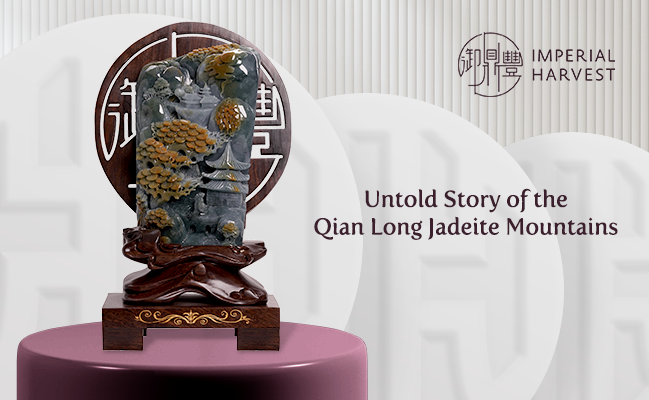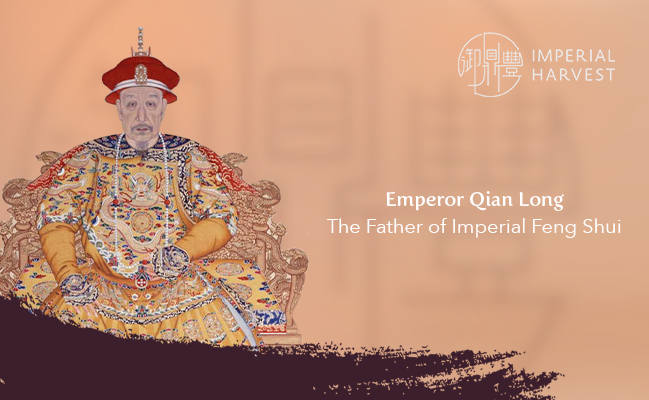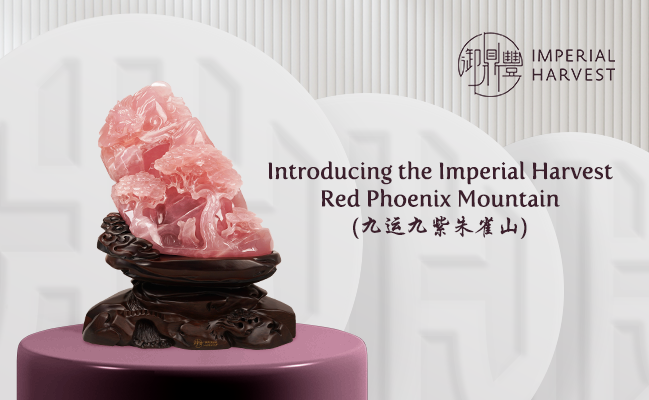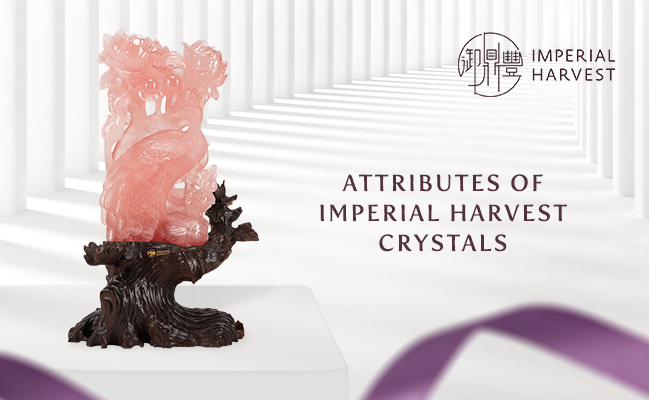

Posted by Imperial Harvest on 31 May 2024
Touring the Palace Museum: Unveiling the Secrets of Imperial Feng Shui (Part 1)
Estimated Reading Time: 5 mins
The Palace Museum (故宫博物院), nestled in the heart of Beijing’s Forbidden City, is a treasure trove of Chinese art, culture and wisdom. The Palace Museum showcases the history of Imperial Feng Shui, along with some of the most formidable Imperial Feng Shui treasures formerly owned by generations of Chinese Emperors.
These rare masterpieces of Imperial Feng Shui stand out among the many treasured exhibits, offering a glimpse into the noble practices and beliefs that shaped the lives of Chinese emperors for centuries, particularly Emperor Qian Long.
One of the most distinguished collections is the exquisitely handcrafted mountain ornaments featured in the Palace Museum—a masterpiece collection created by Emperor Qian Long. Renowned for his vast collection of Qian Long Jadeite Mountains, many of the pieces Emperor Qian Long owned are prominently collected and displayed in the Palace Museum to maintain the rich heritage of Imperial Feng Shui culture.
Emperor Qian Long: Leading Proponent of Imperial Feng Shui
Emperor Qian Long is regarded as one of the world’s most powerful and influential figures of the 18th century. Known for his military and political prowess, he also stands out as one of the most cultured non-Chinese rulers in Chinese history, with significant intellectual and artistic accomplishments and a deep passion for Imperial Feng Shui.
He explored the sources of jadeites through military conquests and supervised their production, encouraging Imperial Feng Shui innovation and initiating new trends. His profound love of jade and respect for the art of Imperial Feng Shui is evident in the names he chose for his sons.
Emperor Qian Long’s adoration for jade was profoundly reflected in the nomenclature of his progeny, with each son bearing a name that included a jade-associated character, symbolising virtues of resilience and integrity:
- Prince Yonglian (永璉), with ‘璉’ signifying a type of polished jade.
- Prince Yongcong (永琮), where ‘琮’ represents a ritualistic jade artefact.
- His successor, the Jiaqing Emperor, originally named Yongyan (永琰), incorporating ‘琰’, which stands for the brilliance and clarity of jade.
The prefix ‘Yong’ (永), meaning ‘eternal’, reflected his desire for their perpetual prosperity and is indicative of the enduring nature of jade.
Conquests and Control of Jade Resources
Emperor Qian Long’s strategic and military ventures, notably his campaigns in Eastern Turkestan (present-day Xinjiang), were not only aimed at expanding his empire’s boundaries but also at securing access to the prized jade mines of the region. This ensured a steady supply of the finest jade, which was pivotal for the emperor’s extensive Feng Shui-oriented projects.
Emperor Qian Long’s Imperial Decree
After securing firm control of the raw jade supply, Emperor Qian Long collaborated with his team of Imperial Feng Shui masters to create a new genre of jadeite ornaments known as the ‘Jade Mountain’ (玉山子). This innovation became possible when large jadeite boulders from the Xinjiang region became available after 1759.
From the 1760s to the 1790s, Qian Long decreed that imperial artisans collaborate with local craftsmen in the south to produce a series of majestic jade mountains inspired by ancient and contemporary paintings.
Emperor Qian Long’s Unwavering Passion for Imperial Feng Shui
Before the workshops could produce a jade mountain, imperial court painters had to create paper drafts from various perspectives and interpretations of the design. Models and prototypes were then made of wood, stone, and wax, which were presented to Emperor Qian Long for approval before being handed to the artisans.
Carved from the finest jadeite, these mountains are embellished with intricate details of flora, fauna, and miniaturised scenes of scholarly pursuits, reflecting the emperor’s intellectual and philosophical interests. Each mountain is also inscribed with poems composed by Emperor Qian Long himself, adding a layer of personal and historical narrative to the pieces. These inscriptions not only document the emperor’s reflections on governance and philosophy but also serve to enhance the Feng Shui efficacy of the mountains by aligning with specific energetic intentions.
Emperor Qian Long’s Stringent Demand and Standards
Unlike other stones, jade production requires a laborious grinding process due to its exceptional hardness and toughness. Emperor Qian Long’s stringent demands for jade carvings to portray elegance and life-like details presented a significant technical challenge: achieving the same effects on hard stone as brushwork on paper.
Treasures of the Palace Museum: The Qian Long Jadeite Mountain
Within the illustrious halls of the Palace Museum stands one of its most iconic artefacts: the Qian Long Jadeite Mountain. More than a mere ornamental piece, this artefact symbolises stability and prosperity and is a testament to the refined artistry of the Qing Dynasty. The mountain is renowned for its intricate carvings, depicting idyllic landscapes, legendary figures, and auspicious symbols etched into high-quality jade.
The Qian Long Jadeite Mountain played a pivotal role in the practice of Imperial Feng Shui, designed specifically to activate the Mountain Star—a key element in Feng Shui that promotes benefactors, health, longevity, and support. Its strategic placement within the emperor’s quarters was believed to balance and optimise the flow of Qi, thereby ensuring harmony and attracting prosperity to the imperial reign.
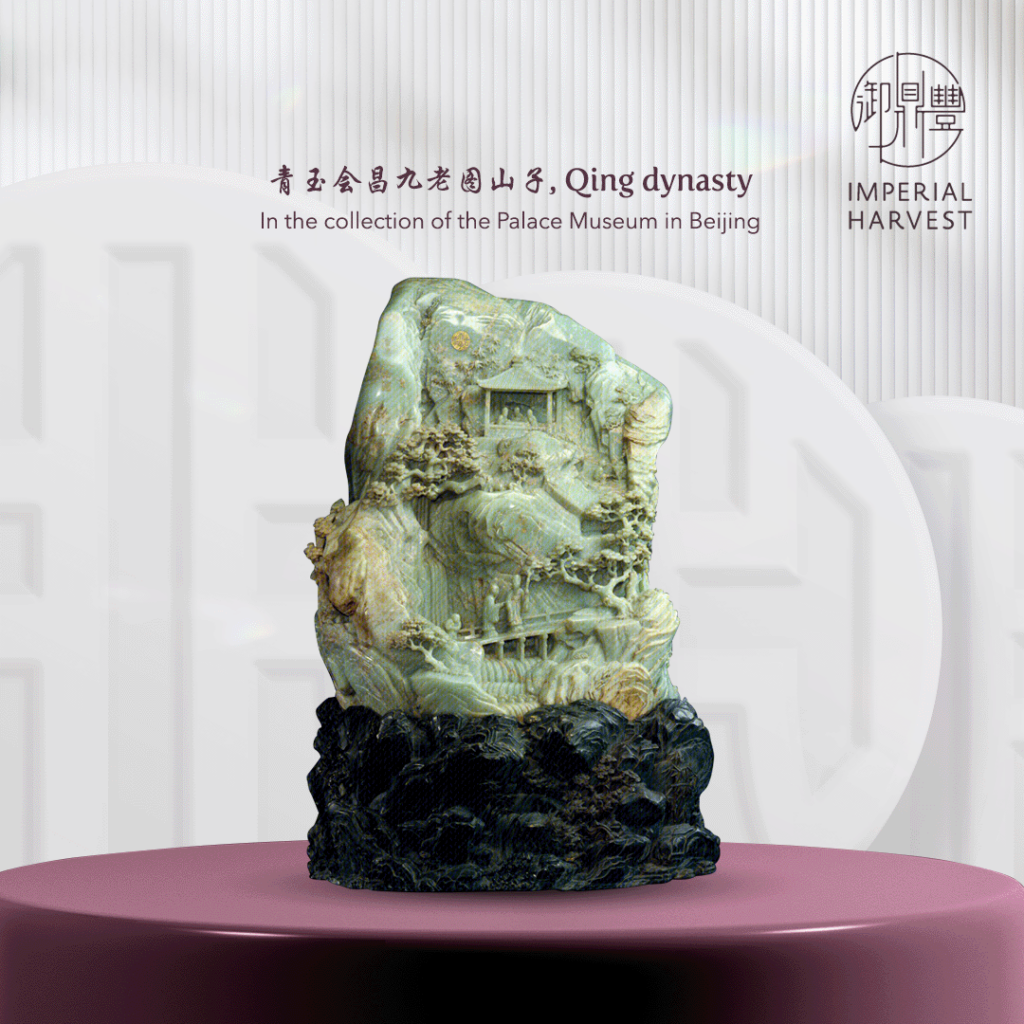
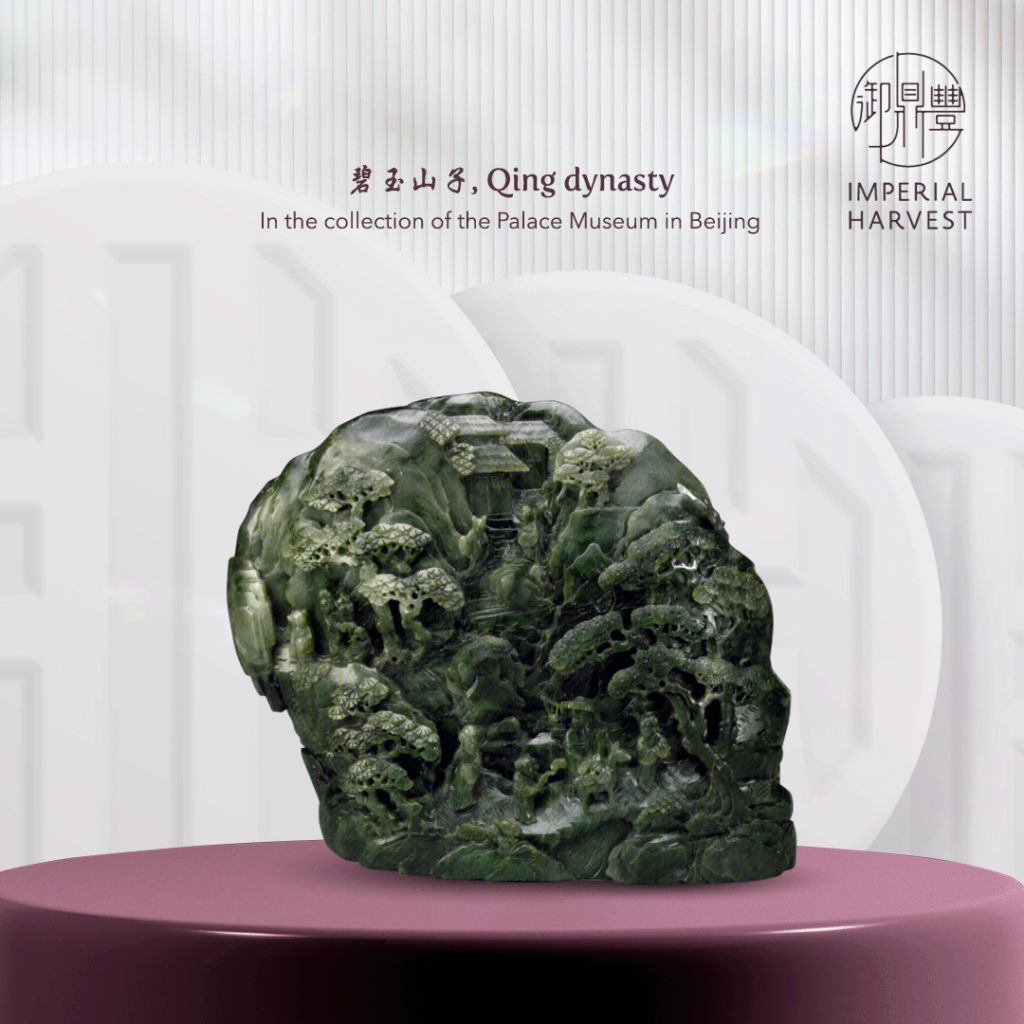
Recognising the profound significance of these jadeite mountains in the context of Imperial Feng Shui, Imperial Harvest has undertaken the mission to not only preserve but also revitalise this ancient art form. The Imperial Harvest Qian Long Jadeite Mountain collection draws inspiration from the original masterpieces, featuring meticulously hand-carved mountains with smooth, rounded tops. These modern adaptations are designed to resonate with the Metal element, known in Feng Shui to foster resilience and attract wealth.
Celebrated for their ability to help one achieve abundance and success in career, business, and sales, the Imperial Harvest Qian Long Jadeite Mountains are more than just artefacts; they are powerful tools for Imperial Feng Shui practice. Each piece, while rooted in the rich traditions of the past, is crafted to meet the aspirations of contemporary patrons, aiding them in achieving success under the most auspicious conditions.
This collection, therefore, serves not only as a link to the imperial past but also as a functional element in the ongoing journey towards prosperity and stability, reflecting the enduring legacy of Emperor Qian Long’s dedication to the art and science of Feng Shui.
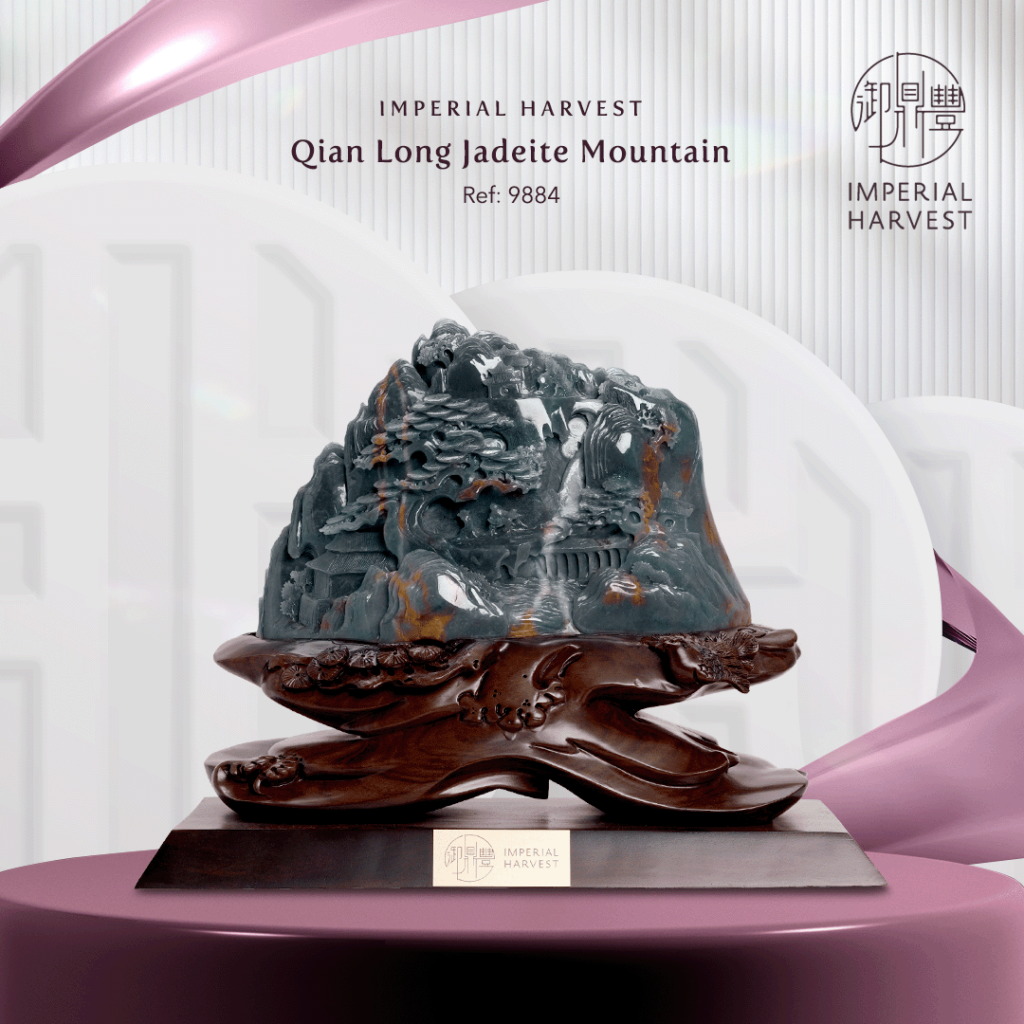
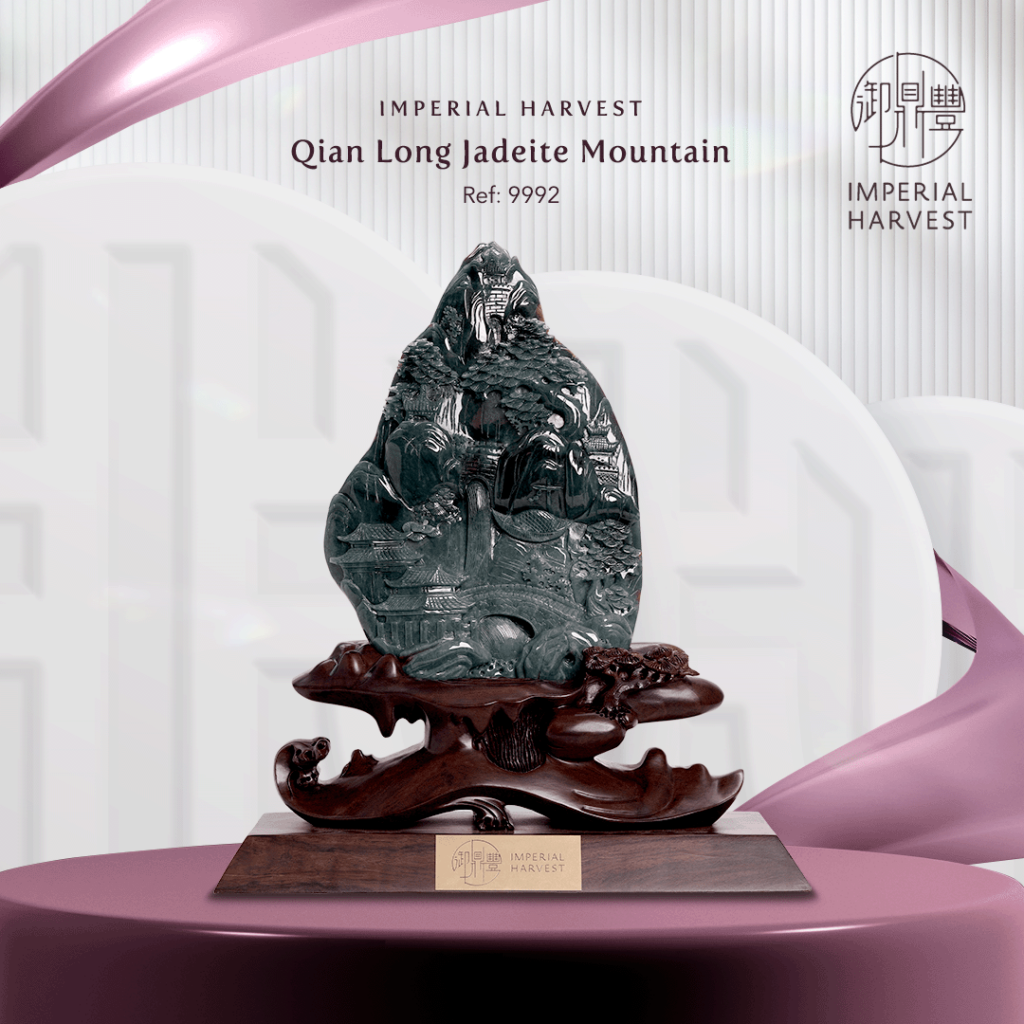
The Lapis Lazuli Mountain for Period 9 (1844-1864)
Period 9 of the Feng Shui cycle is governed by the Fire element, and artefacts aligning with this period are particularly significant as we enter this new era. During the Qing dynasty, Emperor Qian Long, under the advice of his Imperial Feng Shui masters, commissioned the carving of Period 9 mountains using fire-elemental crystals like Lapis Lazuli, Rose Quartz, and Amethyst to leverage the auspicious energies of Period 9.
Among the treasures in the Palace Museum is a stunning mountain carved out of lapis lazuli, a crystal that embodies the Fire element’s energy and vibrancy. This lapis lazuli mountain not only enhances aesthetic appeal but also aligns with the energetic shifts of the current Feng Shui period, promoting prosperity and harmony.
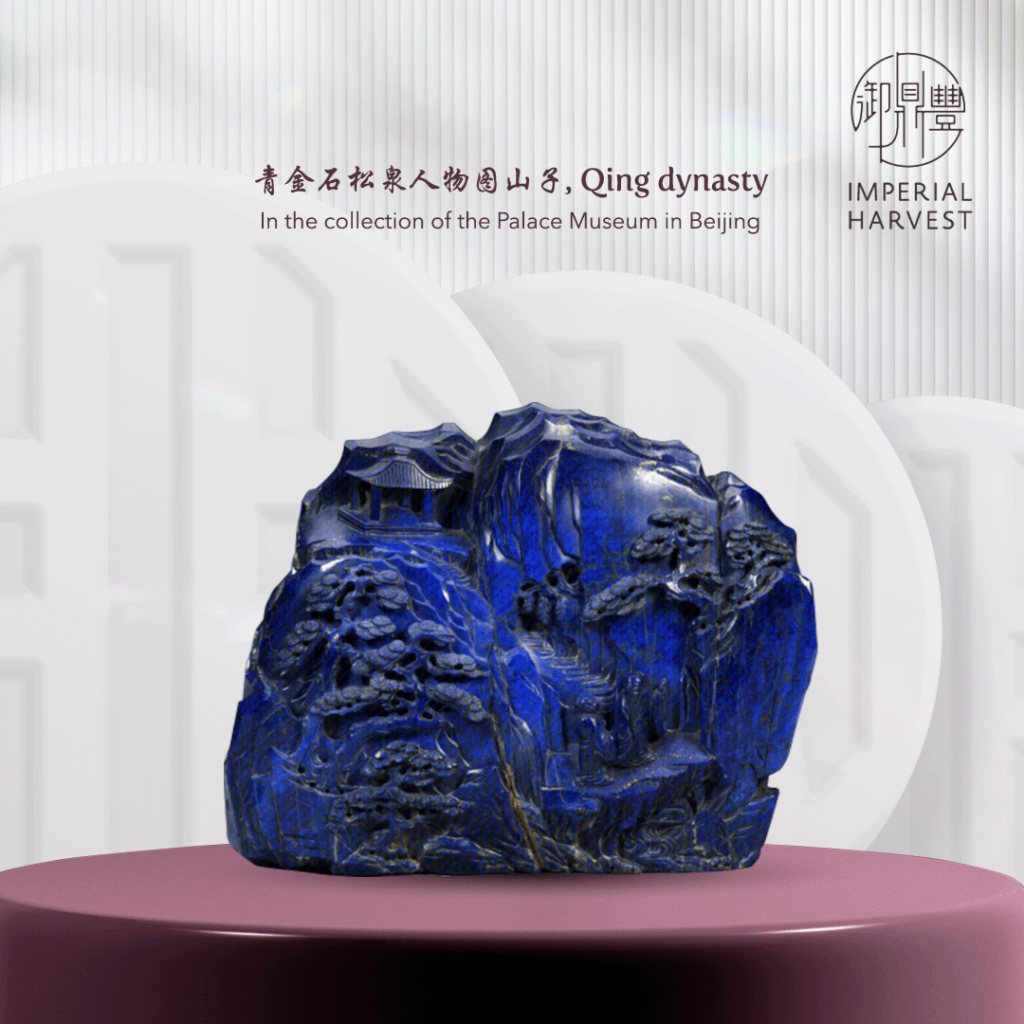
Inspired by the auspicious Red Phoenix of Period 9, the Imperial Harvest Red Phoenix Mountain collection is masterfully designed and exclusively blessed by Master David. This collection activates the auspicious Mountain Star, assisting its destined owners by ushering in benefactor support, prosperity, and harmony for the household. Fire elemental crystals like Lapis Lazuli, Rose Quartz, and Amethyst pay tribute to the Fire element represented by the Period 9 Celestial Animal, the Red Phoenix.
The Imperial Harvest Red Phoenix Mountain collection is the result of years of diligent research, design, and craftsmanship, paying homage to the celestial animal of Period 9, the Red Phoenix (朱雀). Each piece is meticulously crafted and incorporates wealth-enhancing features to invite prosperity and abundance. Individually blessed by Master David on carefully selected auspicious dates, these pieces ensure unparalleled potency and efficacy. Through refined Imperial Feng Shui symbolism, the collection resonates with ambitious individuals aiming for the highest aspirations, elevating wealth, influence, and success to unparalleled heights.
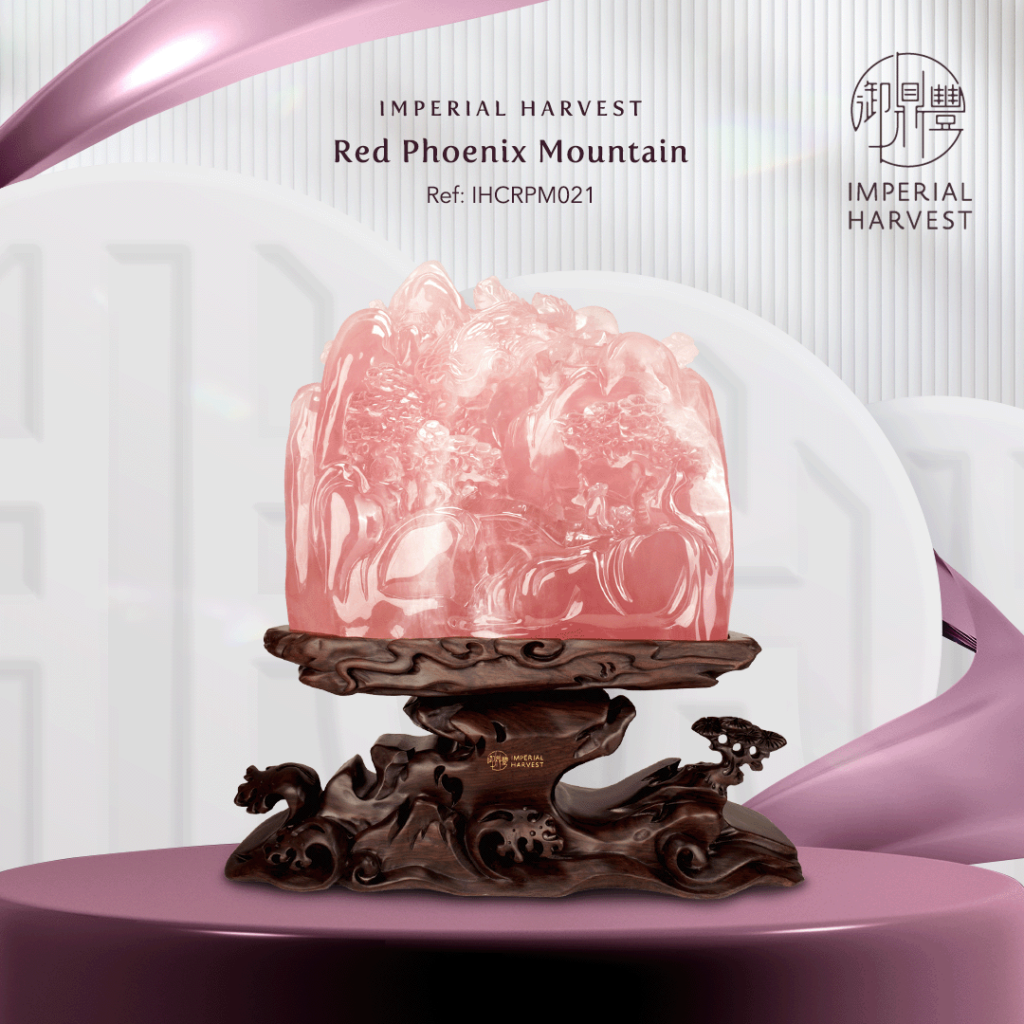
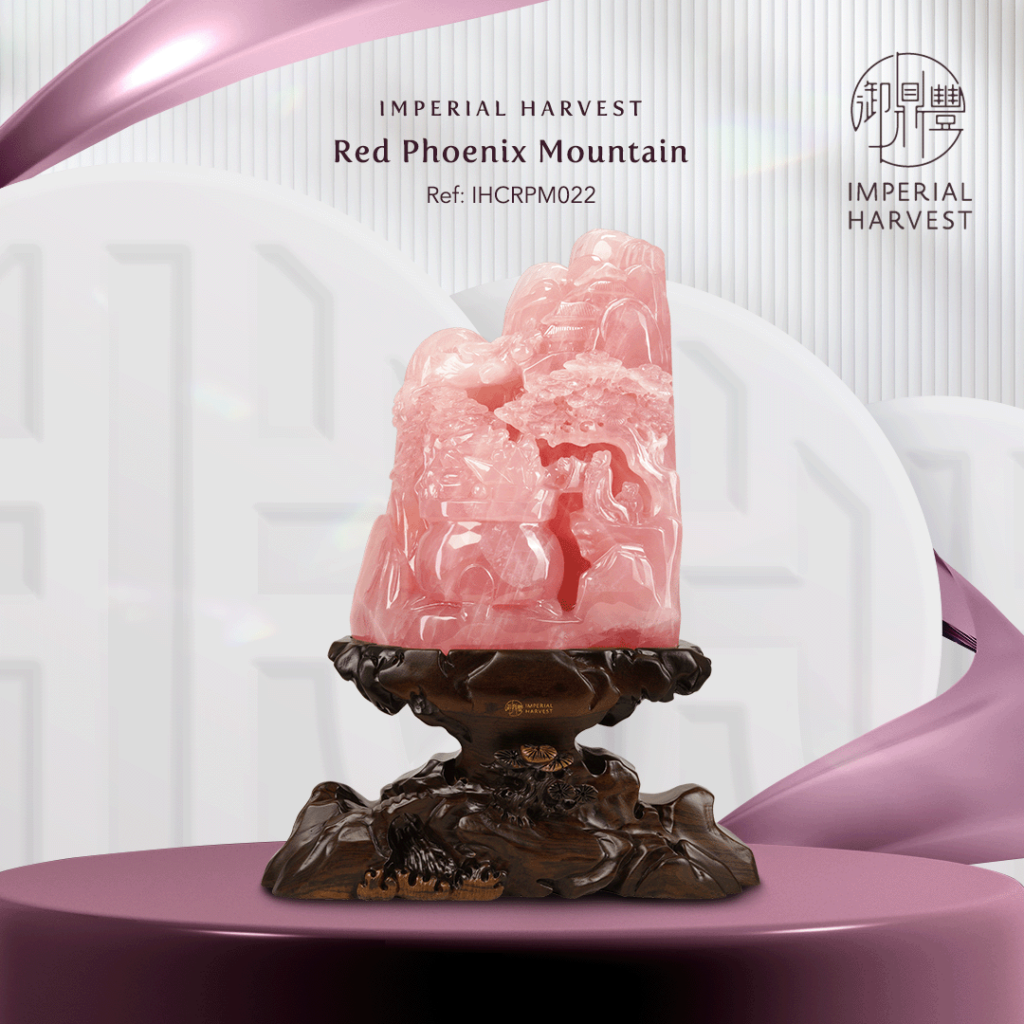
The Culmination of Tradition and Innovation
As we explore the Imperial Feng Shui treasures housed in the Palace Museum, it becomes clear that these artefacts are not merely relics of a bygone era but vibrant embodiments of living tradition and wisdom. Emperor Qian Long’s visionary leadership and profound appreciation for jadeite and crystals enriched the cultural heritage of his dynasty and solidified the role of Feng Shui as a cornerstone of imperial life and governance.
Today, Imperial Harvest honours this legacy by reimagining these ancient masterpieces, allowing modern collectors to connect with the imperial past and harness its potent energies for contemporary success. Through these efforts, the timeless art of Imperial Feng Shui continues to influence and inspire, bridging history with the aspirations of present and future generations and perpetuating a legacy of harmony, prosperity, and cultural continuity.
In the next article, we will shift our focus to the stunning crystal displays that further exemplify the intricate relationship between natural elements and Imperial Feng Shui practices. Stay tuned as we continue to unveil the secrets of these crystal artefacts, revealing how they were used to harness celestial energies and maintain harmony within the imperial palace. Join us in the next part of our series, where we explore the vibrancy and significance of these enchanting crystals and their continued relevance in the art of Feng Shui today.
Imperial Harvest’s expert consultants are always on hand to guide you on your journey and provide you with insights to help you realise your fullest potential. Book a complimentary consultation today or contact us at +65 92301640.
We are located at
For prospective clients:Imperial Harvest402 Orchard Road
Delfi Orchard #02-07/08
Singapore 238876 For existing clients:Imperial Harvest Prestige
402 Orchard Road
Delfi Orchard #03-24/25
Singapore 238876
Most Read Articles
Get to read our life changing articles and get inspired.
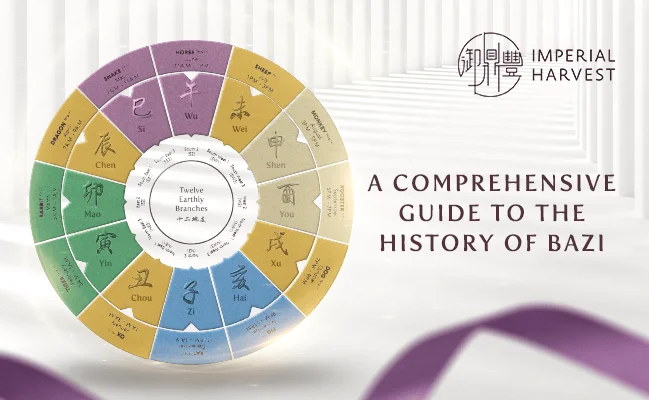
A Comprehensive Guide to the History of Bazi (八字)
Estimated Reading Time: 5 mins Bazi (八字) is often mistakenly assumed as the Chinese counterpart of western Astrology. The similarities between both systems lie in their utilisation of birth dates and time in their calculations, and the ability to be read from a tabulated chart. Where Astrology may take into account the positions of different […]
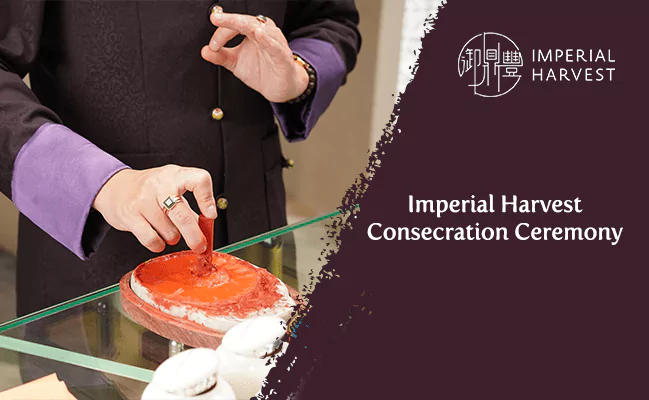
Imperial Harvest Consecration Ceremony
Estimated Reading Time: 5 mins At Imperial Harvest, each earthly treasure undergoes a series of consecration rites performed by Master David, before it is bestowed upon its blessed owner. Every aspect of these sacred Chinese anointing rituals is carefully examined and accurately represented in Master David’s blessings, reflecting Imperial Harvest’s deep respect for these esteemed […]
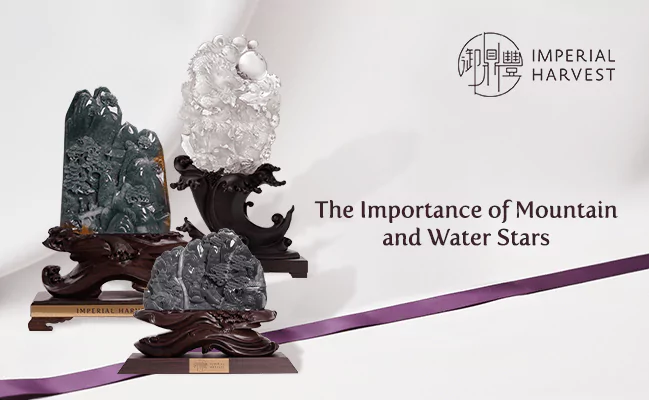
The Importance of Mountain and Water Stars
Estimated Reading Time: 4 mins “山管人丁,水管财”, is a well-cited principle in the study of Imperial Feng Shui that translates to “Mountains govern benefactors, authority and harmony, while Water governs wealth, opportunities and intuition”. This principle reiterates a critical factor in Imperial Feng Shui — balance is the key to achieving success in life. As mountain […]
